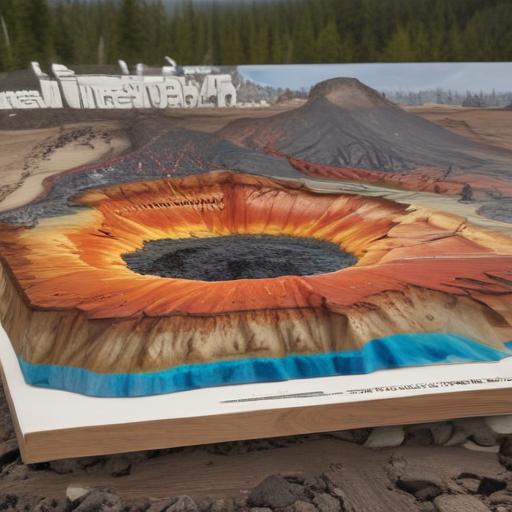A recent investigation into the Yellowstone supervolcano has captured significant attention, with findings shedding new light on the volcanic system lurking beneath the national park. A comprehensive analysis conducted by the U.S. Geological Survey (USGS) has revealed that a considerable volume of magma resides below Yellowstone, specifically targeting the northeast region of the Yellowstone Caldera, which formed during the last super-eruption approximately 630,000 years ago.
By employing advanced techniques to measure the electrical conductivity of rocks, researchers mapped out the magma chambers, discovering pockets of molten rock that could contain between 2-30% magma. Though this multitude of magma indicates a potential for volcanic activity, it remains important to note that these pockets are not coalesced; thus, a colossal eruption is not imminent.
The study notes that while there is an estimated 400 to 500 cubic kilometers (95-120 cubic miles) of thick, silica-rich rhyolite magma concentrated in the northeast, this does not mean an eruption is near. Historical studies indicate that the average recurrence interval of major eruptions at Yellowstone is around 735,000 years, suggesting that a super-eruption is not overdue.
Notably, previous volcanic activity in the region has included several smaller eruptions, such as one 70,000 years ago, indicating that not every volcanic event at Yellowstone is cataclysmic. The researchers have cautioned, however, that if and when a super-eruption does occur, its impacts would be far-reaching, affecting not only the United States but also potentially the global climate.
Past eruptions like those of Mount Pinatubo in 1991 and Mount Tambora in 1815 serve as crucial references for understanding the potential climatic fallout from a major Yellowstone event. These eruptions resulted in significant drops in global temperatures, leading to agricultural failures and social upheaval. Future modeling predicts that, in the event of a Yellowstone super-eruption, global temperatures could decrease by up to 4°C (7°F) on average, with severe consequences for agriculture worldwide.
Interestingly, a recent NASA study diverges from prior assumptions, suggesting that the temperature drop following Yellowstone’s next massive eruption may not be as severe as once thought, although this is yet to be definitively established.
In summary, while the discoveries regarding the magma below Yellowstone provide valuable insights, they also highlight the importance of continued monitoring and research into the volcano’s behavior. The scientific community remains vigilant, recognizing the potential for massive eruptions while clinging to the hope that the timeline for such an event is significantly longer than often perceived. Thus, while vigilance is necessary, the current research indicates that we have time to prepare and adapt.
